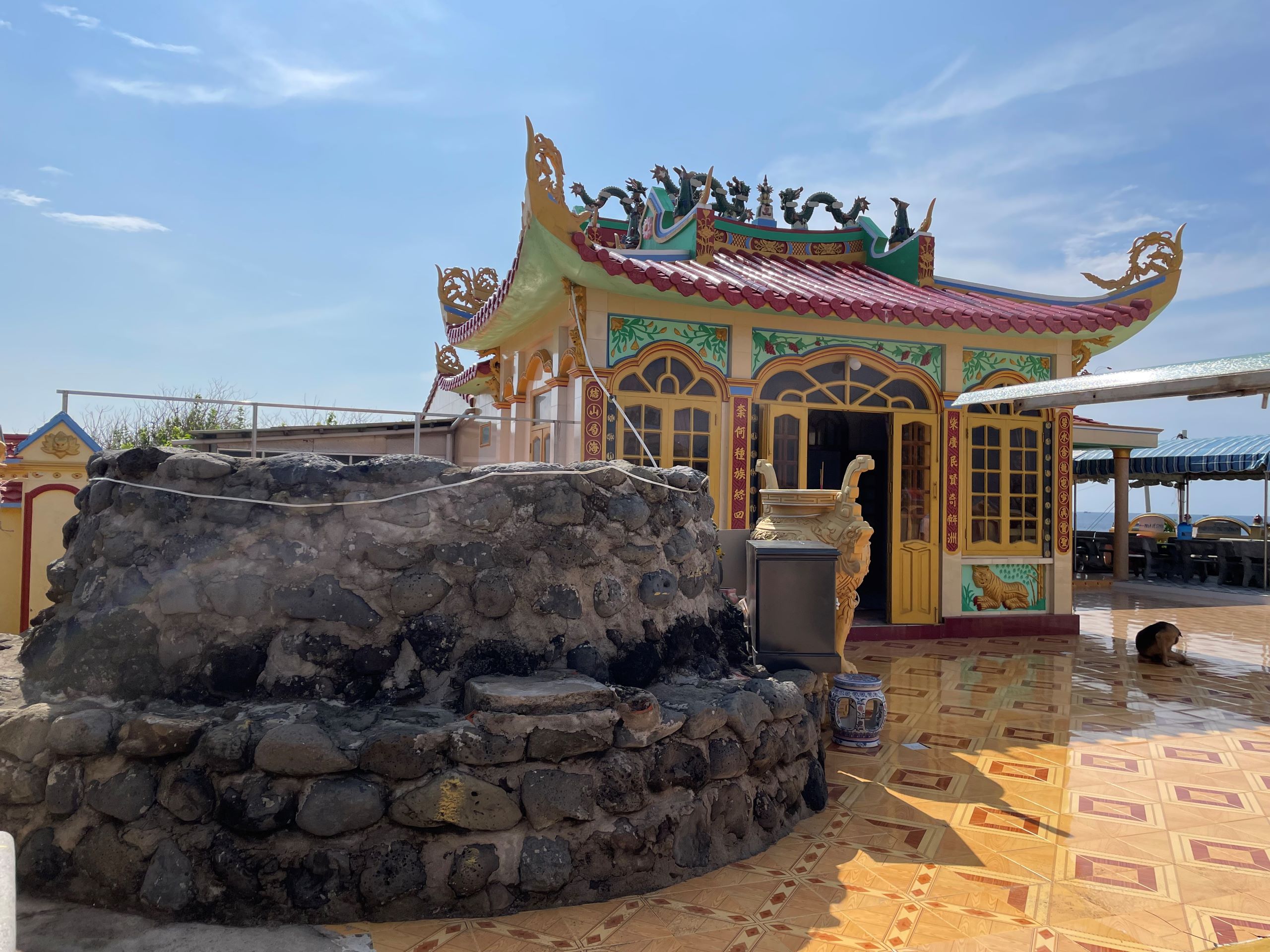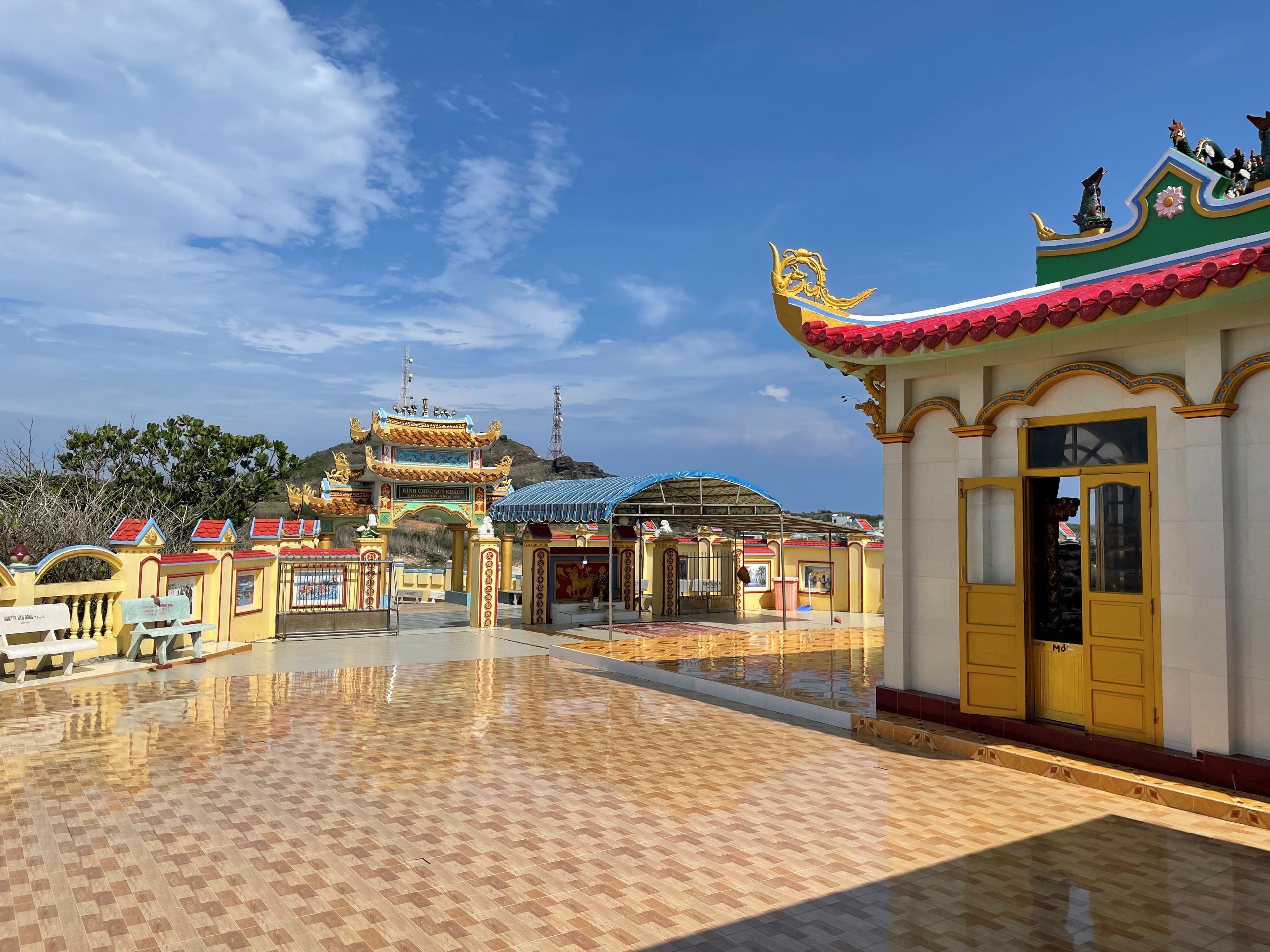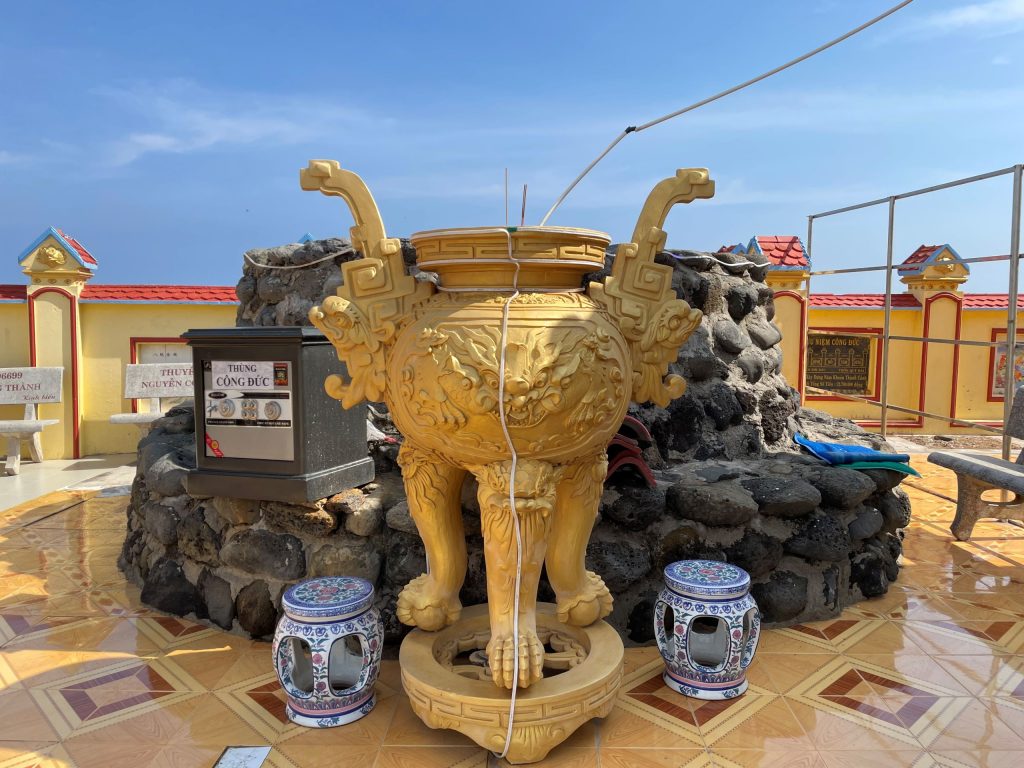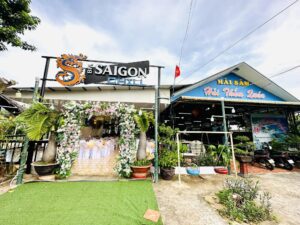“The Tomb of Thay Sai Nai, located in Thon Dong Hai, Long Hai commune, was built by the islanders at the end of the 17th century to worship Thay Sai Nai. Thay Sai Nai is the revered name of the Chinese merchant who played a significant role in protecting, supporting, and rescuing the islanders across generations.
The tomb is a circular structure initially constructed with fired clay, following the burial customs of the Cham people in the ancient regions of Ninh Thuan and Binh Thuan.

The shrine of Thay Sai Nai is a historical relic that bears significant cultural and historical value. It vividly reflects the process of cultural interaction and integration between the Vietnamese and Chinese communities in the remote island region. It also embodies the beauty of folk culture in the lives of Phu Quy’s residents throughout history. Over 300 years of existence, the tomb has been diligently cared for, respected, worshipped, and practiced with traditional rituals by successive generations of the Cham and Vietnamese people residing in the island’s villages.
Legend of Thay Sai Nai in Phu Quy:
There are two different legends passed down by the people of Phu Quy:
- The first legend portrays Thay Sai Nai as a highly skilled Chinese geographer and astronomer. He often traveled the world aboard Chinese trading ships, exploring various countries for his profession. During one of his voyages, he and his crew decided to rest on Phu Quy Island, where he discovered that the island possessed unique spiritual energy compared to other islands. After leaving the island, Thay Sai Nai expressed his wish to have his ashes brought back to Phu Quy for burial upon his death.
- The second legend depicts Thay Sai Nai as a proficient Chinese geographer and physician. He was frequently invited by merchants to accompany their trading ships, providing assistance throughout the South China Sea. While passing through the waters of Phu Quy, he observed a small landmass that resembled a dragon emerging from the sea. Recognizing the island’s favorable geographical conditions, Thay Sai Nai and his crew encountered a severe storm in the area in 1623. They were eventually washed ashore on the island. From that moment on, Thay Sai Nai and his group decided to settle on the island. Over the years, he became a respected resident, engaging in farming and agriculture to sustain himself and provide aid to the local population, offering medical treatments. Moreover, he acted as a wise advisor, guiding the people and advocating for what was right. Due to his profound influence, Thay Sai Nai became the spiritual pillar of the community, revered and respected by the islanders. After his passing, a tomb and shrine were established to honor him.
Regardless of the legend, for the people of Phu Quy Island throughout generations, Thay Sai Nai is regarded as a noble figure with benevolence and virtue, comparable to Princess Ban Tran, a spiritual guardian who supports the islanders amid the vast ocean.

With the preserved tangible and intangible cultural values, the People’s Committee of Binh Thuan Province has officially recognized the Shrine of Thay Sai Nai as a Provincial-level Cultural and Historical Monument in Decision No. 1993/QD-UBND on September 7, 2010.”









